The Chinese space agency lost control of the spacecraft-1 in 2016. Experts predict it will crash back to Earth between October 2017 and April 2018.
When China launched its first space station in 2011, it had great ambitions of using the craft to set up a larger space complex.
But the Chinese space agency lost control of Tiangong-1 in September 2016, and now experts predict the 8.5 tonne craft will come crashing back down to Earth within months.
Worryingly, experts are unsure precisely when the space station will head towards Earth - or where the debris will land.
The vehicle is 10.4 metres long and has a main diameter of 3.35 metres. It has a liftoff mass of 8,506 kilograms and provides 15 cubic metres of pressurized volume
According to the China Manned Space Engineering (CMSE) office, Tiangong-1 also contains Earth observation instrumentation and space environment detectors. Pieces weighing up to 100kg could make it to the surface of Earth
Tiangong-1 is China's first space station launched in September 2011.
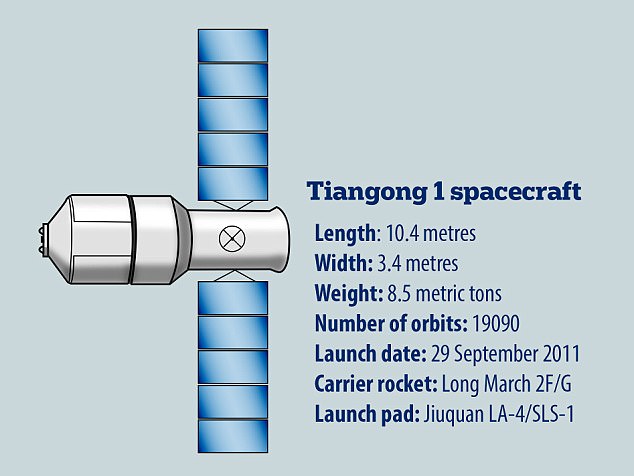
Chinese officials confirmed that they had lost control of the spacecraft in September 2016, and have now predicted that it will come down to Earth between October 2017 and April 2018.
The station's orbit has also been steadily decaying, and in recent weeks it has started to fall faster.
Speaking to the Guardian, Dr Jonathan McDowell, an astrophysicist from Harvard University, said: 'Now that [its] perigee is below 300km and it is in denser atmosphere, the rate of decay is getting higher.
'I expect it will come down a few months from now – late 2017 or early 2018.'
The Chinese space agency has been tracking the space station, and vowed to issue warnings if there are any potential collisions imminent.
But not everyone is convinced by this.
Thomas Dorman, an amateur satellite tracker, told Space.com: 'If I am right, China will wait until the last minute to let the world know it has a problem with their space station.
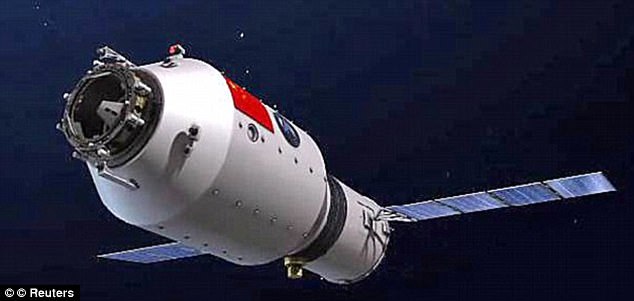
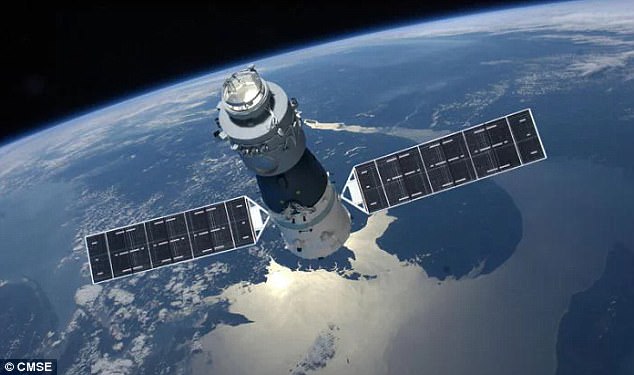
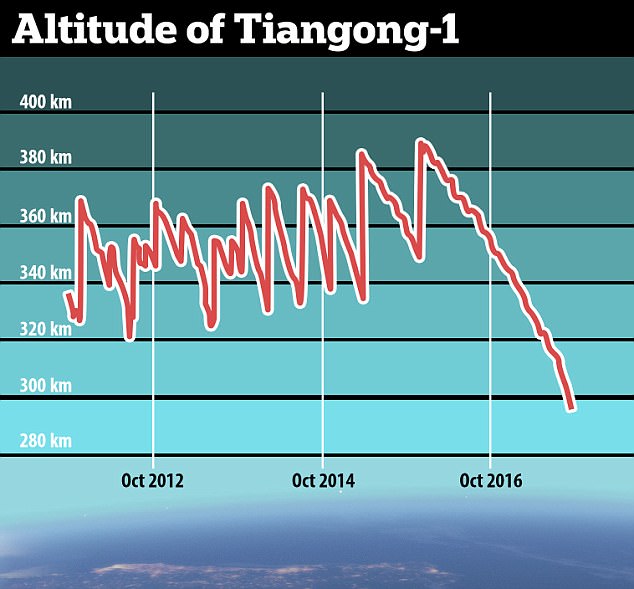
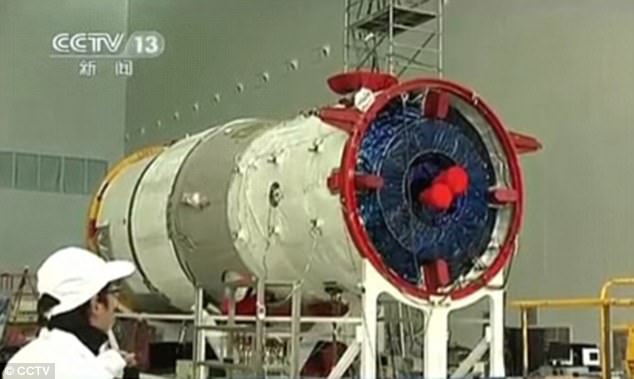
When China launched its first space station in 2011, it had great ambitions of using the craft to set up a larger space complex.
But the Chinese space agency lost control of Tiangong-1 in September 2016, and now experts predict the 8.5 tonne craft will come crashing back down to Earth within months.
Worryingly, experts are unsure precisely when the space station will head towards Earth - or where the debris will land.
The vehicle is 10.4 metres long and has a main diameter of 3.35 metres. It has a liftoff mass of 8,506 kilograms and provides 15 cubic metres of pressurized volume
According to the China Manned Space Engineering (CMSE) office, Tiangong-1 also contains Earth observation instrumentation and space environment detectors. Pieces weighing up to 100kg could make it to the surface of Earth
Tiangong-1 is China's first space station launched in September 2011.
Chinese officials confirmed that they had lost control of the spacecraft in September 2016, and have now predicted that it will come down to Earth between October 2017 and April 2018.
The station's orbit has also been steadily decaying, and in recent weeks it has started to fall faster.
Speaking to the Guardian, Dr Jonathan McDowell, an astrophysicist from Harvard University, said: 'Now that [its] perigee is below 300km and it is in denser atmosphere, the rate of decay is getting higher.
'I expect it will come down a few months from now – late 2017 or early 2018.'
The Chinese space agency has been tracking the space station, and vowed to issue warnings if there are any potential collisions imminent.
But not everyone is convinced by this.
Thomas Dorman, an amateur satellite tracker, told Space.com: 'If I am right, China will wait until the last minute to let the world know it has a problem with their space station.

Comments
Post a Comment